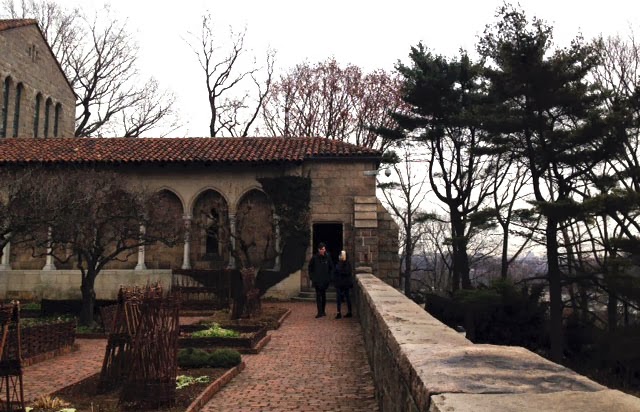The museum was opened to the public in 1938, and has a rich history, including the preservation of land directly across from The Cloisters on the other side of the Hudson River in New Jersey, which has secured the museum's pristine views of the NJ Palisades. As you might imagine, the Cloisters are very peaceful. It's a wonderful place for reflection and contemplation. The collection of artwork housed within is as spectacular and vast as the setting of the Cloisters itself. It was lovely spending the last day of 2013 among such beauty and history. It was the perfect location to gain the perspective and peace of mind that this time of year calls for.
 |
| One of the medieval inspired gardens ("Bonnefont"). |
 |
| View of the Palisades in the distance. |
Below, is a cloister from the Carmelite convent formally located in Trie-sur-Baïse (south-western France, near Toulouse). Elements of this structure date back to the late 15th century.
The museum houses several small scales pieces in a gallery called the Treasury. From the curator of the exhibit: "Every medieval church had a treasury in which its most important objects were kept. For this reason, the Cloisters Treasury is very much in keeping with tradition." Below is an example of one of the treasures on display, a triptych depicting scenes from the Passion of Christ (1494).
Below, through the archway hangs the first tapestry in a series of seven called The Unicorn Tapestries created in the Netherlands between 1495 and 1505. They are woven of wool, silk, silver, and gold. The tapestries depict a story in which an elusive magical unicorn is hunted and finally tamed, willingly. The unicorn is thought to symbolize love.
 |
| The Unicorn in Captivity |
Below, the last sun rays of 2013 shine through the trees on the grounds of the Cloisters.
For more information about the exhibits in the museum I recommend reading, "A Walk Through the Cloisters," by Bonnie Young.




_020214.jpg)


No comments:
Post a Comment